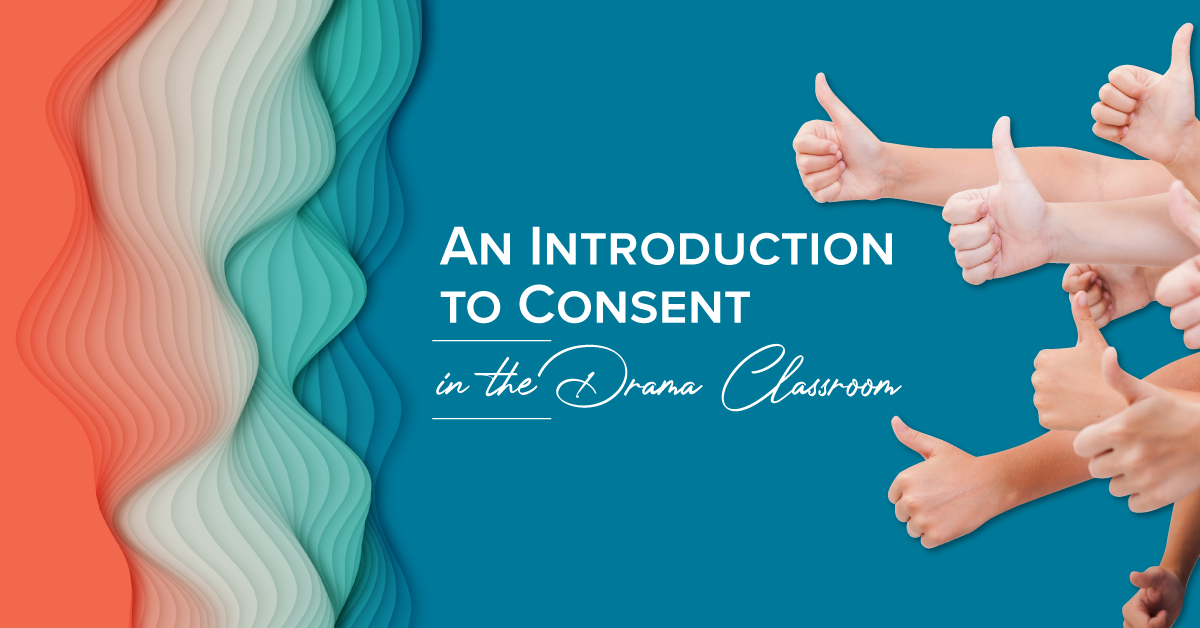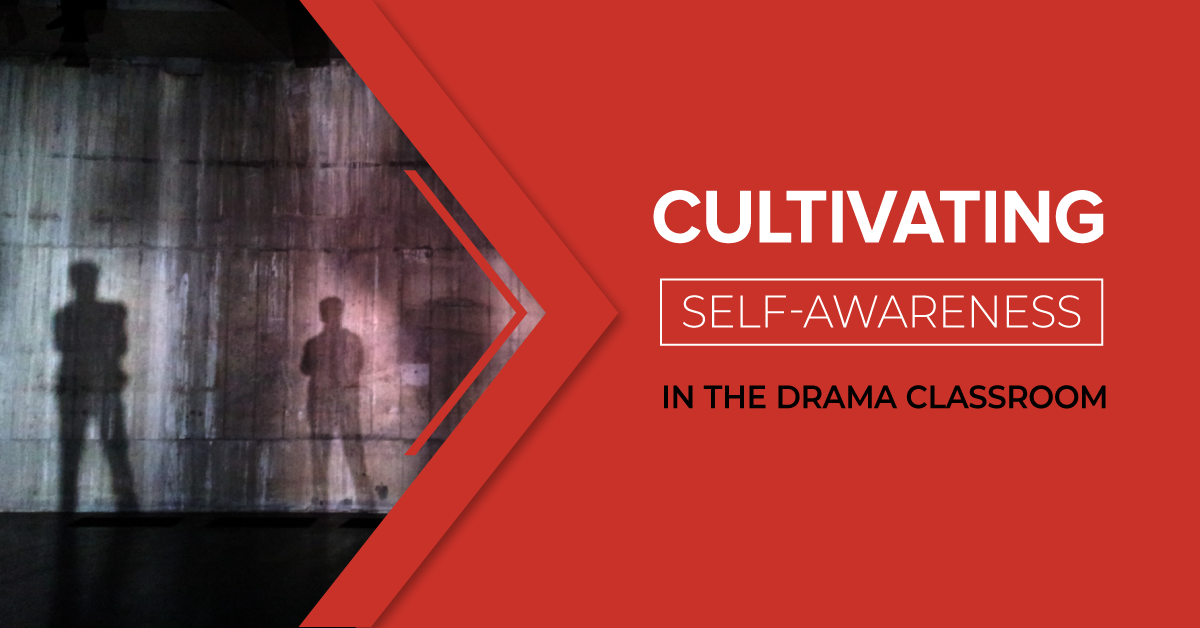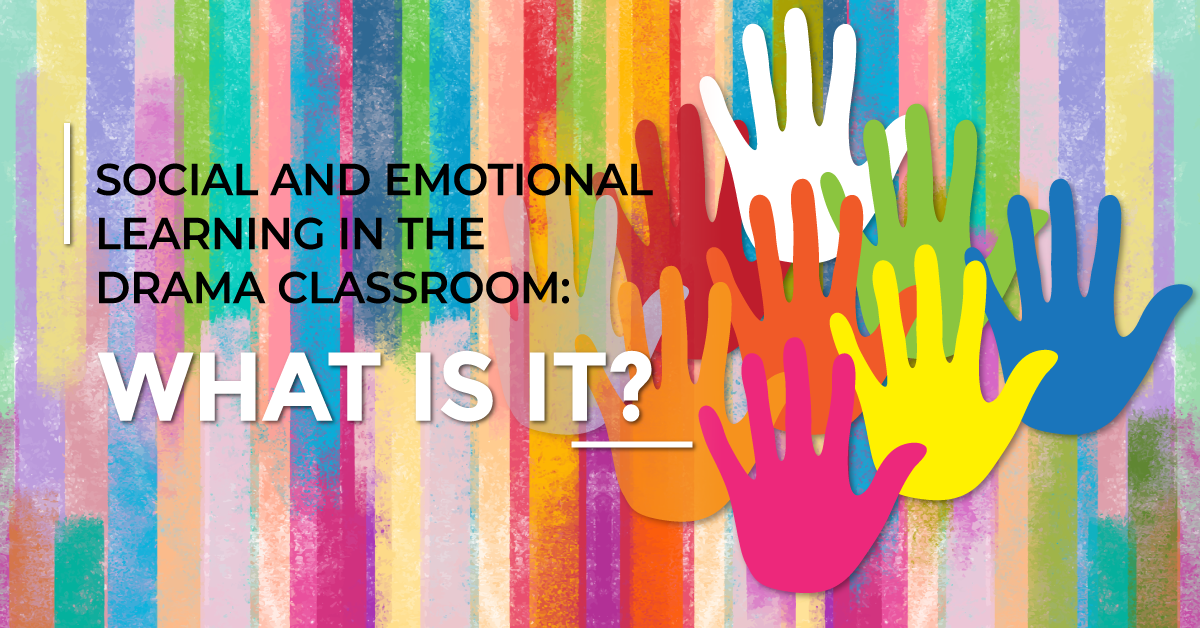Do you have girls who are tired of the same old stereotypes and love something dark and twisted? Camel Dung and Cloves offers rich, eccentric roles with nonstop plot twists that will keep them hooked!
An Introduction to Consent in the Drama Classroom
Consent can be a touchy subject in the classroom. Many students immediately think that consent refers to intimacy, such as embraces or stage kisses. While that is an important part of consent in the drama classroom, it encompasses much more than that. Consent in the drama classroom creates a safe and respectful environment, and is a big part of social and emotional learning. It can apply to incidents in drama class, as well as a multitude of real-life situations. Here’s a brief overview of this vast, evolving, and important topic:
1. Explaining consent to your students
Consent, simply put, means permission for something to happen or be done. Consent is specific, informed, and flexible — meaning it can change or be withdrawn.
You can introduce the topic of consent by discussing with your students how they’d ask a fellow student to borrow an item of theirs. They can’t just go into that student’s backpack and grab the item — they have to ask first, and wait for the other student’s response. If it’s yes, great! If it’s no, then that’s that. Or, there might be conditions involved. There are many additional things to consider — check out the download below for more.
This is a simplified explanation of how consent works. Try having your students role-play the interaction above. What are their thoughts afterwards?
2. Boundaries
What are students’ physical and mental boundaries? Are they comfortable with the content of the lesson or the scene you’re studying in class? We don’t always know what experiences students have been through that could make certain content upsetting. For example, a student who recently had a death in the family may have difficulty studying a play with themes of grief. Or, they may be comfortable reading a scene in which a character dies, but they don’t want to play that role onstage.
Boundaries vary from student to student, and oftentimes we don’t know what our boundaries are until they’re pushed. In these moments, it’s important to be flexible and compassionate, so students can work through their feelings.
3. Bodily autonomy
Bodily autonomy refers to students’ ability to decide what happens to their body without outside influence. In drama class, we use our bodies to tell stories. We often engage in hands-on work, using exercises, games, and scenes that involve physical touching, such as holding hands. Do students not want others to be near or touch certain parts of their body (or to touch them in general)? They may also feel uncomfortable in a particular costume piece if it is too short, tight, or revealing. Can you modify the actions of the exercise, the movements of the scene, or the garments to respect students’ boundaries?
4. Power dynamics
Are your drama students comfortable speaking up to their peers? Students may say yes to their peers on the outside, but mean no on the inside. Can you tell the difference? As well, if a student is in a leadership position (such as assistant director or stage manager), does that make it easier or more difficult for other students to speak up to them?
Furthermore, can your students speak up to you? Teachers hold a lot of power, especially if they’re also directing the show. Are your students comfortable telling you no, and are you comfortable with hearing no? What feelings arise when a student says no to you? Do you feel confident, defensive, proud, irritated, confused, something else?
Allow yourself time and grace to reflect on this. As our students learn about consent, boundaries, bodily autonomy, and power dynamics, we teachers are also learning and breaking our own previous patterns. It is not uncommon for feelings to arise when working on consent — after all, many of us are also healing from previous hurts and traumas. Be gentle with yourself, and be proud of the progress you are making.
Additional Resources:
- #MeToo in the Drama Classroom
- Creating a Safe Rehearsal Space
- Creating a Safe Drama Classroom
- Safety Concerns in Distance Learning



